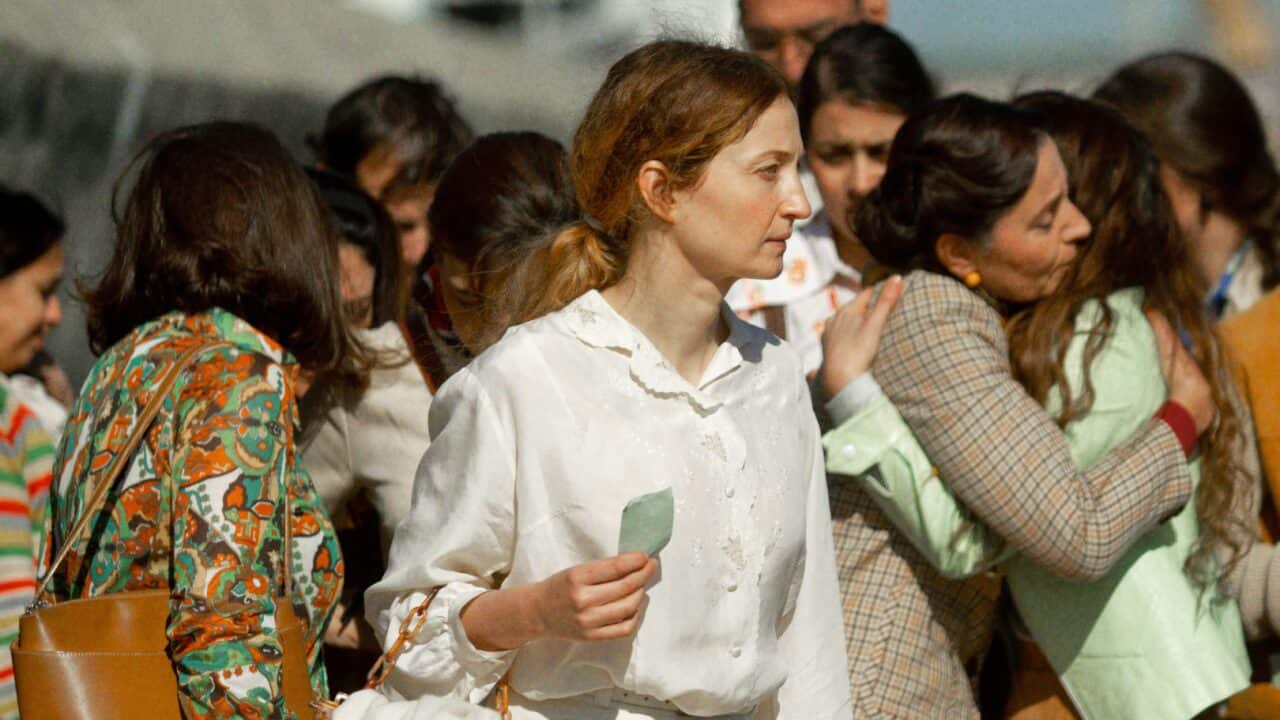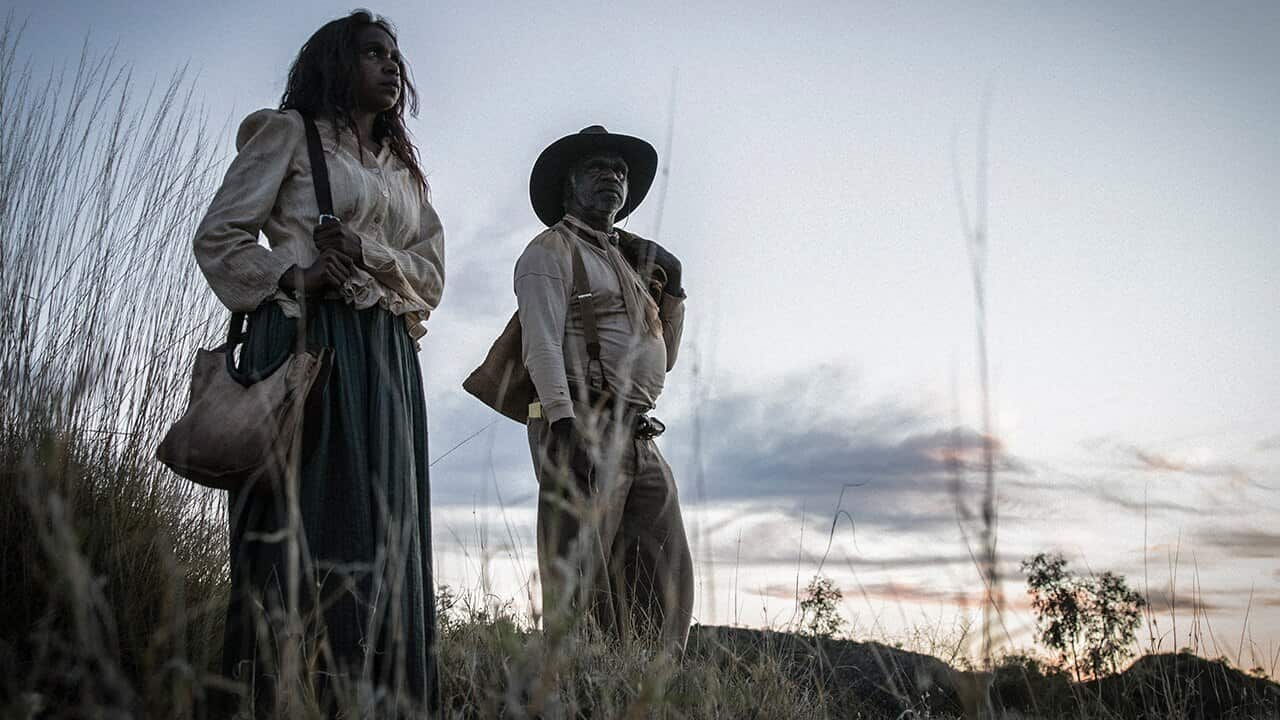Maybe it’s because we’re not exactly in tune with nature anymore, or that we don’t like to be reminded that we occasionally slip a few links down the food chain from time to time, but killer animals remain a popular theme for horror movies and your bloodier brand of outdoor adventure tale.
Written and directed by Wolf Creek’s Greg McLean, Rogue is a Top End terror that sees a mixed bag of familiar faces (Michael Vartan, Radha Mitchell, Sam Worthington, Mia Wasikowska, Stephen Curry, John Jarratt) wind up on a huge reptile’s tasting plate after a tourist boat is capsized on croc-infested Kakadu. It’s a taut, polished, often rather brutal little work that delights in munching on its ensemble one by one.
Spiders, from director Tibor Takács (everything from The Gate to Sabrina the Teenage Witch to Mansquito) is a much more fantastical, occasionally downright cheesy affair that sees Patrick Muldoon (Starship Troopers) and William Hope (Aliens – and how’s that for a crossover?) contend with an infestation of mutant alien spiders in the New York City subway system, offering up B-movie thrills, spills and kills for fans of unpretentious genre fare.
And they’re both, more or less, animal attack movies, a sprawling and nebulously defined subgenre, that hit its apotheosis with Jaws in 1975. Like Jaws, Rogue posits a marauding beasty that’s ostensibly natural, just very big (and for our purposes, “bigger than ever seen in the real world” still constitutes “ostensibly natural”). Jaws being one of the biggest financial successes of all time, it sparked a series of… well, “homages” might be the polite term, with various species subbed in instead of Spielberg’s Great White Shark: a killer whale (Orca, 1977), a bear (Grizzly, 1976), an alligator (er, Alligator, 1980, although that one was a mutant), and so on.
Crocs and gators being what they are, they come up a lot in this little genre ghetto. Like Rogue, Black Water by Andrew Traucki is an Australian killer croc film that was released in 2007 – perhaps they sometimes travel in packs after all? They’re predated by Arch Nicholson’s Dark Age (1987), in which John Jarratt once again dealt with a menacing crocodile, and Black Water got a sequel, Black Water: Abyss, in 2018.
Really, though, for all that everyone since Spielberg in 1975 has lifted their dramatic and staging techniques, cinematically Jaws owes a massive debt to Alfred Hitchcock’s The Birds (1963), if not the first “when everyday animals go nuts” movie, but certainly one of the most important.
Spiders, on other hand, takes its cues from the nuclear paranoia and giant bug movies of the ‘50s, the first and finest being 1954’s Them!, in which Los Angeles is terrorised by irradiated ants grown to giant size. (That film’s star, James Whitmore, would go on to get munched in 1997’s underrated The Relic – but that’s a monster movie, not a killer animal movie.) The defining characteristic here is regular animals driven mad and made monstrous by science, pollution or some other manmade nonsense, an often heavy-handed metaphor for fear of the future. These flicks also get termed eco-horror for that reason: Frogs (1972) sees swamp critters strike back against a polluter (but no frogs do any actual killing), while the Ozploitation classic Long Weekend (1978) sees a couple away on a remote beach get punished by the local wildlife seemingly for the crime of bringing their domestic drama to the bush. John Frankenheimer’s Prophecy (1979) sees its cast, including Rocky’s Talia Shire, menaced by a hideous beast that turns out to be a mutant bear, while Deep Blue Sea (1999) and its sequels might seem like Jaws-alikes at first taste, but their critters being sharks genetically engineered for brain size puts them in the “atomic animal” camp.
The defining characteristic here is regular animals driven mad and made monstrous by science, pollution or some other manmade nonsense, an often heavy-handed metaphor for fear of the future. These flicks also get termed eco-horror for that reason: Frogs (1972) sees swamp critters strike back against a polluter (but no frogs do any actual killing), while the Ozploitation classic Long Weekend (1978) sees a couple away on a remote beach get punished by the local wildlife seemingly for the crime of bringing their domestic drama to the bush. John Frankenheimer’s Prophecy (1979) sees its cast, including Rocky’s Talia Shire, menaced by a hideous beast that turns out to be a mutant bear, while Deep Blue Sea (1999) and its sequels might seem like Jaws-alikes at first taste, but their critters being sharks genetically engineered for brain size puts them in the “atomic animal” camp.

‘Spiders’ Source: Distributor
But those categories are unfixed and rather permeable, and the key to animal attack movies is that they are by and large predicated on the animal in question acting in ways no animal ever would. Sometimes that’s given a reason, be it infection (Cujo, 1983), motivation (Jaws: The Revenge, 1987, which posits that not only can a shark want retribution, it’ll travel to get it) or just being out of their environment and free from ecological pressures (the spiders of 1990’s Arachnophobia are simply a heretofore unknown species doing their thing in Smalltown USA). But usually, filmmakers just rely on the ignorance of the audience; the wolves in Joe Carnahan’s The Grey (2011) are about as realistic as the killer bees in The Swarm (1978) – and yes, even the predations of the shark in Jaws are about as likely as those of The Birds.
And yet it still works on some primal level, because no matter how sophisticated we get, some part of our inherited monkey brain is convinced we’ll end our lives with a flash of teeth and a guttural snarl, part of some creature’s complete breakfast. As long as people are afraid of being eaten, bitten, stung or otherwise dispatched by our fellow members of the animal kingdom, these movies will keep coming.
Rogue airs at 8.30pm on Thursday 7 October on NITV. It will be streaming at SBS On Demand after going to air.
Spiders airs at 8.30pm on Saturday 9 October on NITV.









